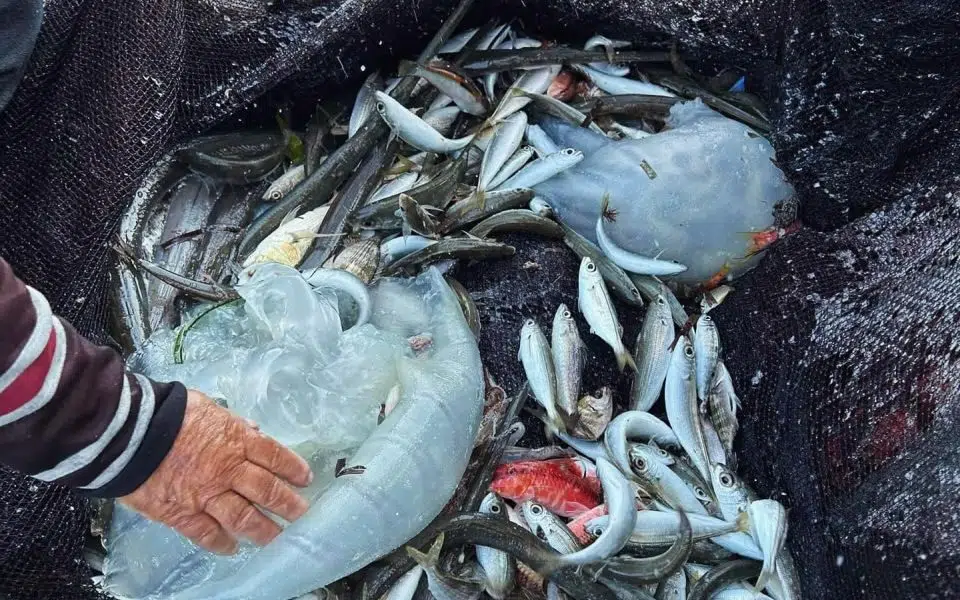
Nomad jellyfish, a large species that can cause painful injuries to humans, have been found in waters around Greece’s Rhodes.
“The Rhopilema nomadica, also known as the nomadic jellyfish, is bell-shaped, has a transparent-bluish color, whose diameter can reach up to one meter,” the Rhodes Hydrobiological Station said.
Nomad jellyfish have eight thick tentacles that contain millions of nematocysts, which, upon contact with a foreign body, release a microscopic “harpoon” carrying venom.
It can grow up to 10 kg of weight, and its bell is commonly 40–60 cm in diameter but can be up to 90 cm. The European Union lists it as one of the worst invasive marine species in European waters.
“The appearance of jellyfish outbreaks is a transient phenomenon that usually lasts from a few hours to a few days, and depends mainly on sea currents. At the same time, the increase in the temperature of the planet, and therefore of the sea, due to climate change, creates favorable conditions for the appearance of such outbreaks in the jellyfish populations,” the Rhodes Hydrobiological Station said.
The scientists pointed out that sea temperatures around the island are 3°C higher than last year, adding that the decline in sea turtles, for whom jellyfish are a staple food, has also contributed to the increase in the jellyfish population.
Indigenous to the Indian and Pacific oceans, since the 1970s nomad jellyfish have passed through the Suez Canal into the Mediterranean.
Jellyfish and invasive fish species in Greece
The jellyfish one sees on the beaches in Greece are probably the least dangerous of any anywhere, with their size being much smaller than those found in the world’s oceans.
The most common jellyfish in Greek seas is the Pelagia noctiluca, which lives on the high seas and its population growth has been proven to have nothing to do with pollution.
However, scientists have warned that the rise in temperatures in the Mediterranean Sea with the proliferation of invasive fish species and jellyfish pose a threat to the entire marine ecosystem.
As the sea warms and becomes saltier because of human-induced global heating, fish from tropical latitudes are finding a more welcoming habitat in an area that, at least nominally, is temperate rather than tropical.
The most common of these are the lionfish and the silver-cheeked toadfish, both of which are highly toxic and pose a danger to other fish, but also to humans.
Lionfish, a species of ray-finned fish that are native to the region of the western Indo-Pacific, have been recently spotted in the Aegean.
Scientists say that the fish, which can grow up to 35 cm (14 inches) in length, has venomous fins. The dorsal fin has thirteen long, stiff spines and nine to eleven soft rays, and the anal fin has three long spines and six to seven soft rays.
The toadfish are extremely poisonous if eaten because they contain tetrodotoxin in their ovaries, and, to a lesser extent, in their skin, muscles, and liver. This substance serves to protect the species from voracious predators.
See all the latest news from Greece and the world at Greekreporter.com. Contact our newsroom to report an update or send your story, photos and videos. Follow GR on Google News and subscribe here to our daily email!



